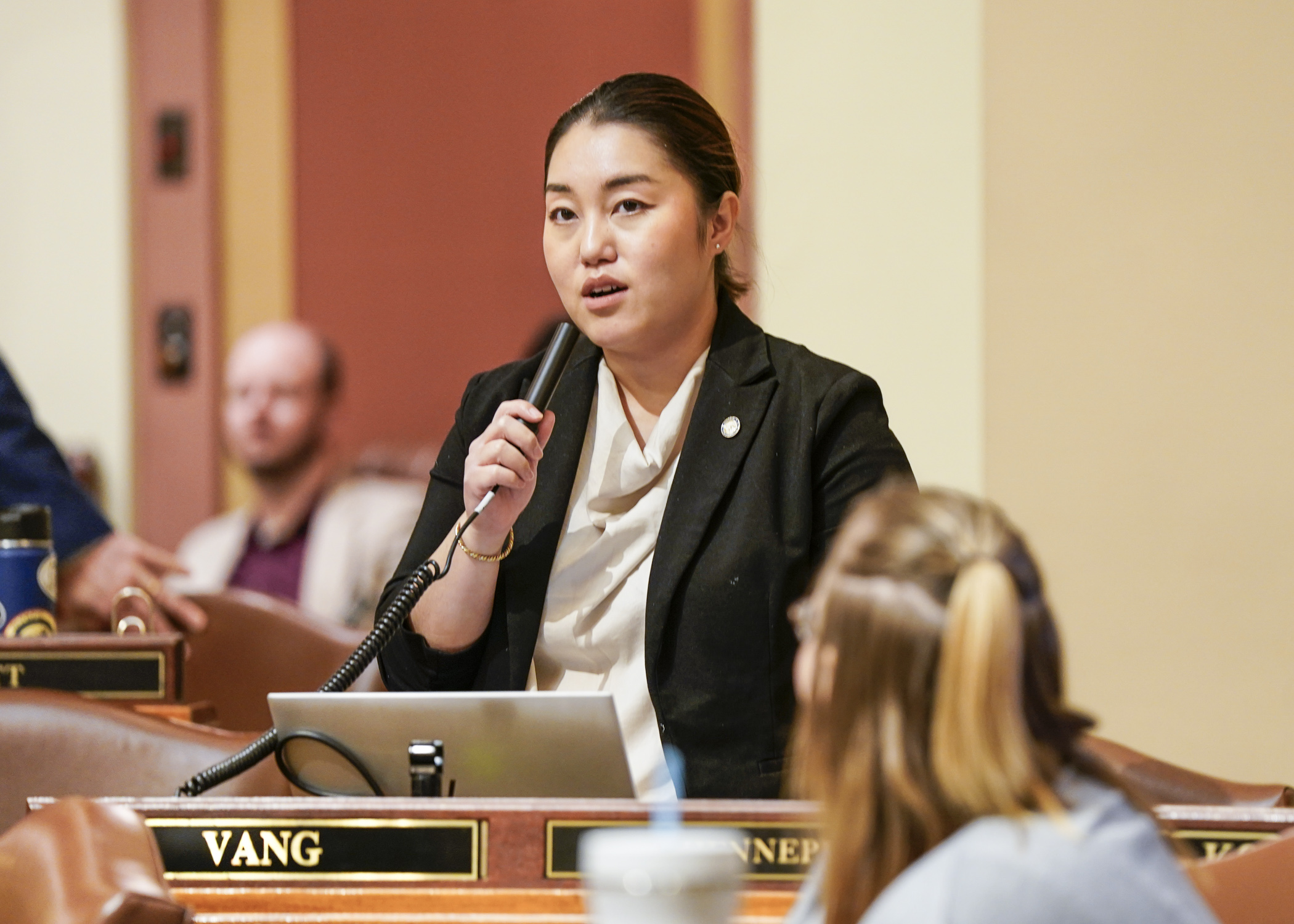House OKs $50 million to restock popular farm loan program

A popular program providing low-interest farm loans received overwhelming support from the House Thursday.
On a 129-0 vote, legislators passed HF463 which would appropriate $50 million from state bond proceeds for the Rural Finance Authority. Administered through the Department of Agriculture, the RFA partners with local lenders to offer credit to farmers on more favorable terms than may otherwise be available.
The program is good for farmers and has broad, bipartisan support, said Rep. Samantha Vang (DFL-Brooklyn Center). She sponsors the bill now heading to the Senate.
Rep. Paul Anderson (R-Starbuck) unsuccessfully offered an amendment that would have increased the amount appropriated to $100 million. This wouldn’t necessarily mean the RFA would sell up to the full amount immediately, but it could save the RFA from having to return to the Legislature as quickly, he said.
Vang opposed the amendment, saying the $50 million appropriation is the only number that had been before the House Agriculture Finance and Policy Committee and matches the amount in the Senate companion bill.
In 2020, the Legislature appropriated $50 million for the RFA. Demand has risen along with interest rates, and the authority is expected to be out of funds this fall.
Originated in 1986 to restructure debt, the Rural Finance Authority offers multiple loan programs. Among them are loans for beginning farmers, disaster recovery, seller sponsored purchases, agricultural improvement, and purchase of livestock equipment.
Most loans are available only to farmers whose wealth falls below an inflation-adjusted limit. For example, applicants’ net worth may not exceed $513,000 to qualify for livestock equipment loans or $903,000 for beginning farmer loans.
The Rural Finance Authority typically works through local lenders rather than lending directly to farmers. After a loan closes, the RFA “buys” 45% of the loan, lowering the overall interest rate. The borrower repays the local lender, and the local lender repays the Rural Finance Authority.
In its history, the authority has issued 3,810 loans totaling $362.4 million and has taken a loss on only 21 of them (0.002%). It currently has 742 active loans with a balance of more than $99.9 million.
Related Articles
Search Session Daily
Advanced Search OptionsPriority Dailies
Speaker Emerita Melissa Hortman, husband killed in attack
By HPIS Staff House Speaker Emerita Melissa Hortman (DFL-Brooklyn Park) and her husband, Mark, were fatally shot in their home early Saturday morning.
Gov. Tim Walz announced the news dur...
House Speaker Emerita Melissa Hortman (DFL-Brooklyn Park) and her husband, Mark, were fatally shot in their home early Saturday morning.
Gov. Tim Walz announced the news dur...
Lawmakers deliver budget bills to governor's desk in one-day special session
By Mike Cook About that talk of needing all 21 hours left in a legislative day to complete a special session?
House members were more than up to the challenge Monday. Beginning at 10 a.m...
About that talk of needing all 21 hours left in a legislative day to complete a special session?
House members were more than up to the challenge Monday. Beginning at 10 a.m...